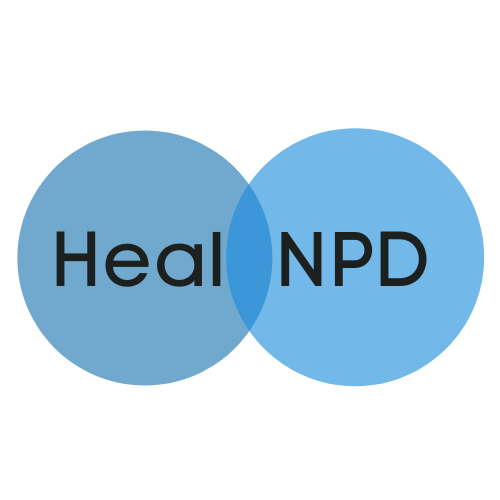Is NPD *really* a mental illness?
Watch the video on YouTube.
There seems to be significant confusion about whether Narcissistic Personality Disorder (NPD) and pathological narcissism should be considered forms of mental illness. This topic has sparked numerous debates on the Heal NPD YouTube channel, with viewers expressing perspectives that underscore fundamental misunderstandings about the nature and definition of mental illness.
Defining Mental Illness
The American Psychiatric Association (APA) defines mental illness as referring “collectively to all diagnosable mental disorders (2022).” The APA's Diagnostic and Statistical Manual of Mental Disorders (DSM) serves as the standard reference for classifying mental disorders in the United States. Notably, personality disorders, including NPD, are listed in the DSM, making it clear that they are, by definition, mental illnesses.
Characteristics of Mental Illness
The APA further characterizes mental illness as “any condition that involves
1.Significant changes in thinking, emotion and/or behavior.
2. Distress and/or problems functioning in social, work or family activities.
Applying these criteria to NPD, it becomes evident that NPD exhibits the characteristics of mental illness.
Individuals with NPD frequently experience episodes of inflated self-esteem, marked behavioral changes, idealization or devaluation of others, entitlement outbursts, and more. These shifts in self-esteem and behavior meet the APA's criteria for significant changes in thinking, emotion, and behavior. Moreover, individuals with NPD often experience distress and impaired social functioning due to their fragile self-esteem and interpersonal difficulties.
Fragile Self-esteem
Fragile self-esteem is a key aspect of NPD. Individuals with NPD struggle with maintaining a stable self-image and self-worth. They often experience periods of unrealistically positive self-esteem, where they may perceive themselves as flawless or of infinite capabilities. During these phases, their behavior can change significantly, often characterized by excessive self-confidence, an increased appetite for responsibility, idealization or devaluation of others, disdain, angry entitlement, substance abuse, and infidelity.
Conversely, individuals with NPD also endure phases of unrealistically negative self-esteem. According to the DSM-5-TR, the most recent version of the DSM, individuals with NPD are plagued by self-doubt, self-criticism, and a sense of emptiness. Low self-esteem in NPD is associated with feelings of inferiority, vulnerability, and recurring emotions like shame, envy, and humiliation, which are coupled with self-criticism and insecurity. These emotional struggles can lead to social withdrawal and depression. The high perfectionist standards often associated with NPD can intensify the fear of imperfection and failure, potentially resulting in suicidal ideation during severe stress.
So, not only is NPD a mental illness by definition because it is a diagnosable mental disorder in the DSM, but it also aligns with the other criteria outlined by the APA. It involves significant changes in thinking, emotion, and behavior and leads to distress and problems in social, work, or family activities.
Pathological Narcissism: A Broad Perspective
What about pathological narcissism? Is that also a form of mental illness?
Pathological narcissism is a broad term that encompasses difficulties in maintaining a positive, realistic self-image; paired with difficulties in effective coping when facing threats to self-esteem. Pathological narcissism is the umbrella term we use to describe unhealthy narcissism, that is, when a person is having trouble with their self-image and their self-esteem.
NPD is one diagnosable instance of pathological narcissism. It’s the main one we think of, because it is a personality style that is defined by pathological narcissism. But pathological narcissism can show up in many other mental disorders as well. For example, major depression often involves negative distortions in self-image, including feelings of worthlessness, low self-esteem, and problems coping with these issues. We could therefore say that some cases of major depression involve pathological narcissism. We also find pathological narcissism in personality disorders besides NPD, since many of them involve distortions in self-image. We find pathological narcissism in bipolar disorders that feature depressive episodes where the person feels worthless and incapable, or manic episodes where the person’s self-image is distorted in a positive direction, and they experience periods of grandiosity. We may find pathological narcissism in psychotic disorders, where the individual experiences delusions involving their self-image.
Pathological narcissism is not, itself, a diagnosable disorder. Rather, it serves as a comprehensive category of mental illness that pertains to unstable and unrealistic self-image and self-esteem.
Conclusion
It is important to recognize that pathological narcissism, including NPD, falls under the umbrella of mental illness. The misconceptions surrounding this topic are often rooted in a lack of understanding of the diverse ways in which pathological narcissism can manifest within different mental disorders. By acknowledging the comprehensive nature of mental illness and understanding its various manifestations, we can foster a more informed and compassionate discussion around these issues.
References:
American Psychiatric Association (2022, November). What is mental illness? https://www.psychiatry.org/patients-families/what-is-mental-illness
